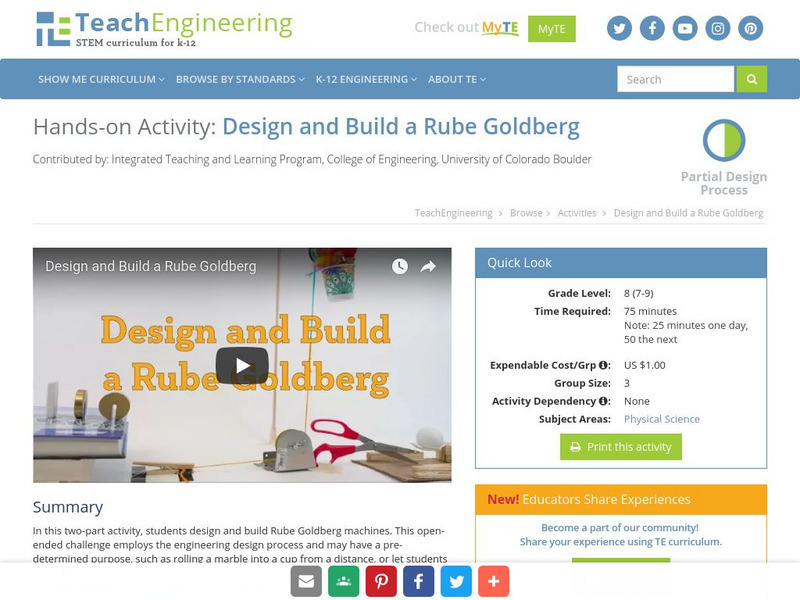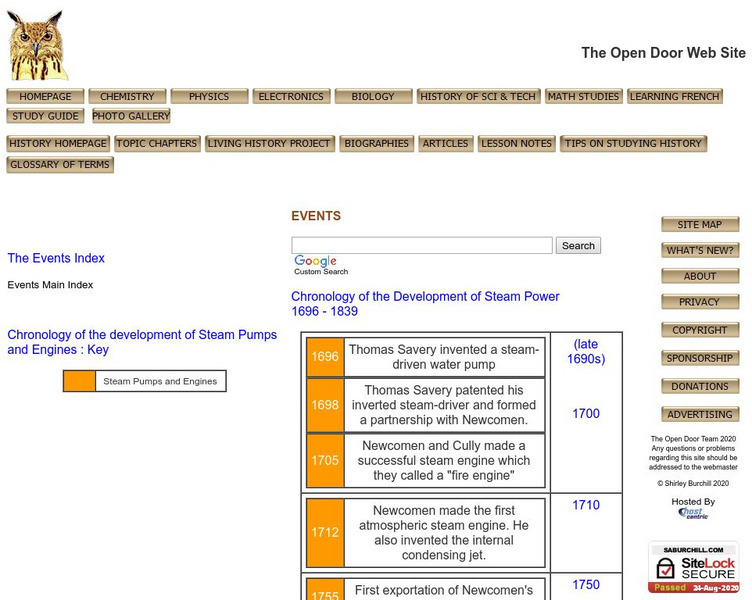Science Education Resource Center at Carleton College
Serc: Mn Step: Six Simple Machines: How They Combine to Form Complex Machines
For this activity, students predict which simple machines might be inside a small household appliance. They then take it apart to investigate, and record what they discover. In the process, they learn how simple machines are combined to...
The Franklin Institute
Franklin Institute Online: Simple Machines
Information on all six simple machines, nicely presented with extra information available for all. Other sources available. Do "Try This Demonstration."
Alabama Learning Exchange
Alex: How to Make Something Simple, Hard
Students will have completed a unit of forces and motion prior to the current unit of study on simple machines (lever, inclined plane, screw, wedge, pulley, wheel and axle). Students will review the functions and examples of simple...
TeachEngineering
Teach Engineering: Design and Build a Rube Goldberg
In this two-part activity, students design and build a Rube Goldberg machine. The open ended problem uses the engineering design process and can have a preset purpose, such as rolling a marble into a cup from a distance, or can be left...
Science Struck
Science Struck: Simple Machines: Pulley Systems
Describes some history of the pulley, how it works, the formula for calculating its mechanical advantage, types of pulley systems, and some applications of pulleys.
CK-12 Foundation
Ck 12: Physical Science: Pulley
[Free Registration/Login may be required to access all resource tools.] What a pulley is and the three basic types, and the mechanical advantage of a pulley.
Science Struck
Science Struck: Examples of Pulleys in Daily Life
Learn how pulleys work and their many uses in everyday life, industry, recreation, and other activities. Includes many pictures of pulleys and pulley systems.
Science Struck
Science Struck: How Does an Ancient and Modern Catapult Work
A short explanation of how a catapult works and some examples of them.
Open Door Team
Open Door Web Site: Chronology of the Development of Steam Power 1696 1839
This complete chronology of steam power is designed in time line fashion. Next to each year is a detailed description of the invention. Another useful aspect of this site is the "Link to the decades," found at the top of the page. Each...
Other popular searches
- Example of Compound Machines
- Building a Compound Machines
- Simple and Compound Machines
- Inventing Compound Machines
- Legos Compound Machines
- Compound Machines Knex
- Building Compound Machines
- Compound Machines Kn Ex
- Compound Machines Knox
- Lego's Compound Machines





